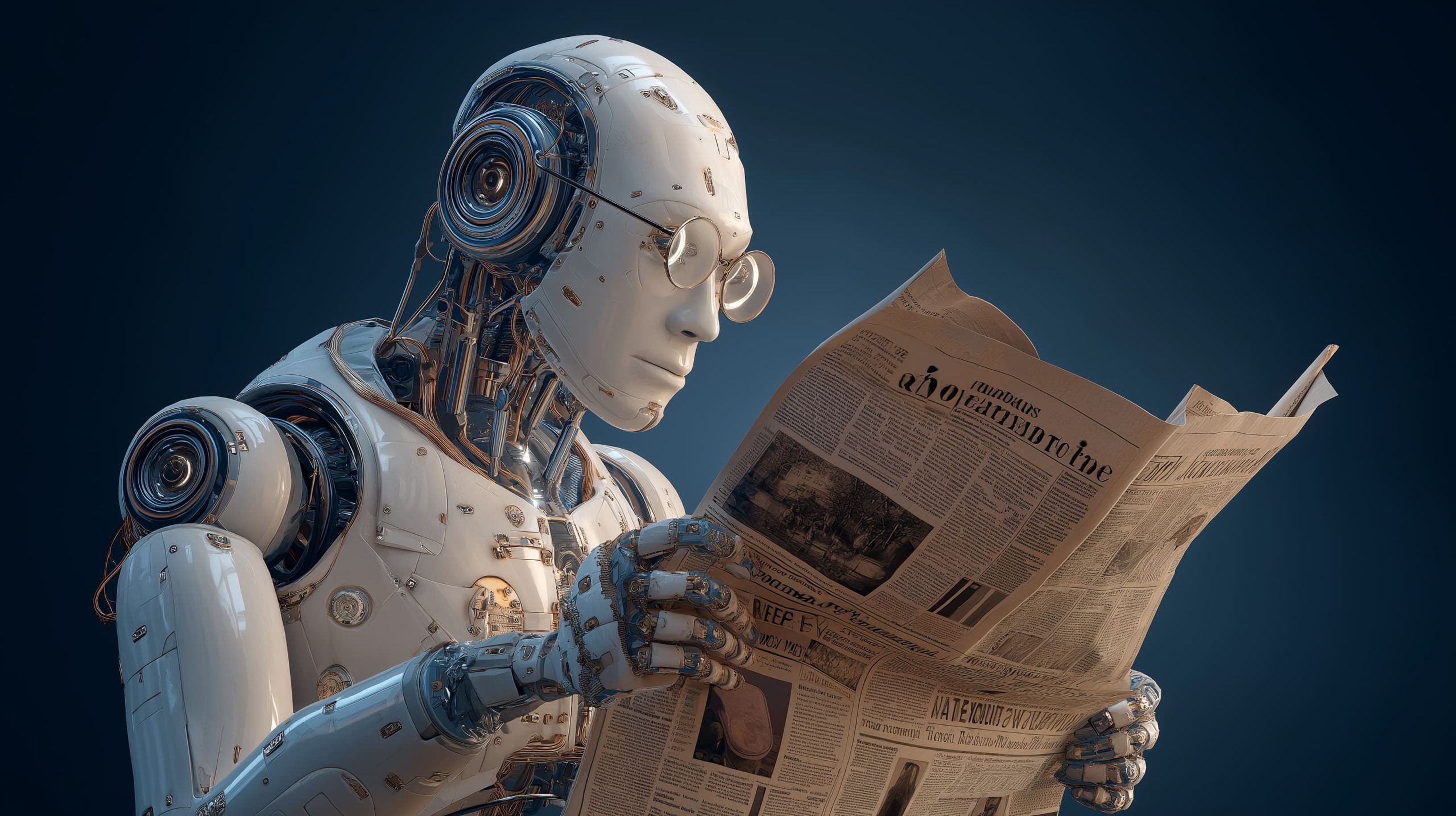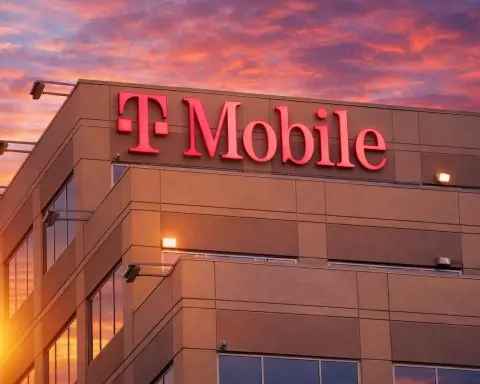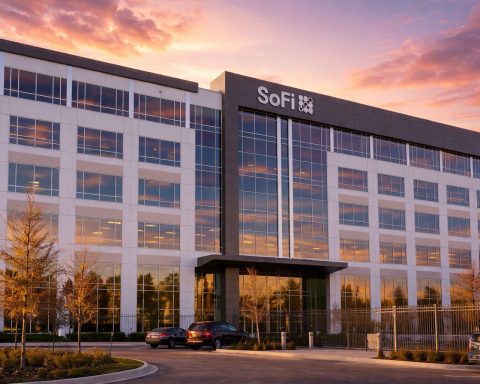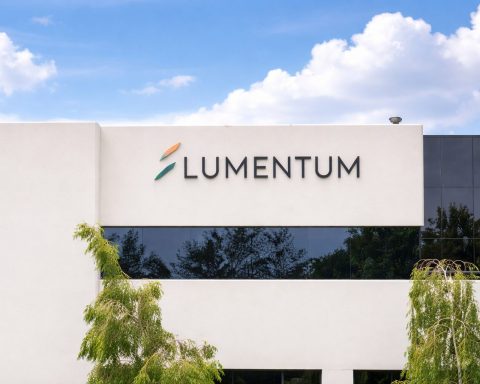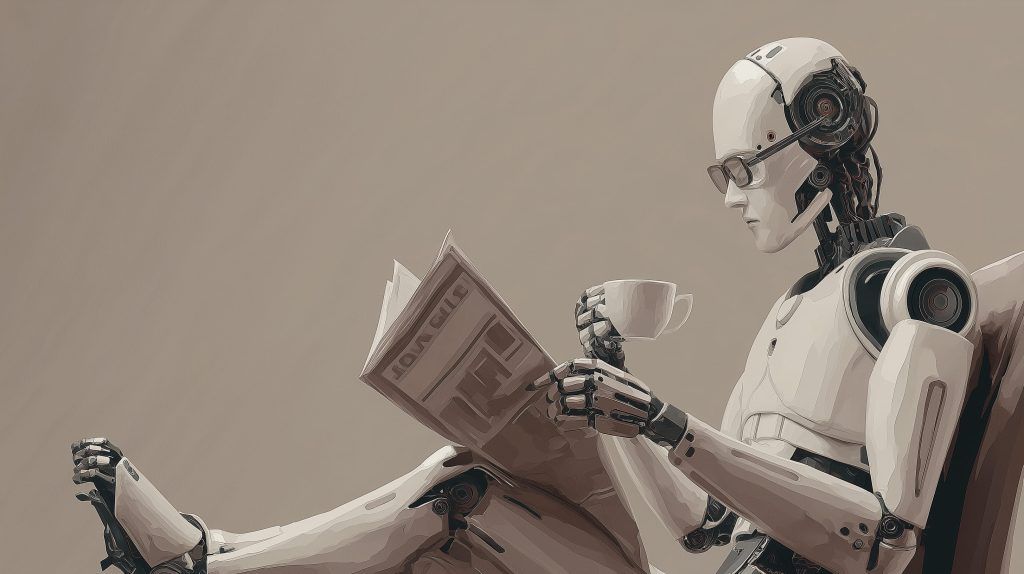- In mid-August 2025, OpenAI unveiled GPT-5, a “major upgrade” with PhD-level expertise across coding to medicine and rolling out to all 700 million ChatGPT users; Sam Altman said it feels like you can ask a legitimate expert about anything, but it cannot learn on its own.
- A team led by Pan Jianwei in China arranged more than 2,000 neutral-atom qubits into a perfect array—roughly 10× larger than prior systems—and positioned rubidium atoms in precise patterns in about 1/60,000th of a second using AI-driven optimization.
- On August 14, 2025, the White House released an “America’s AI Action Plan” to boost U.S. AI leadership, paired with an executive order titled “Preventing Woke AI in the Federal Government” requiring AI vendors for federal agencies to prove models are free from ideological biases.
- As of August 2025, EU officials said there would be no pause or grace period in enforcing the AI Act, and developers serving EU users must comply with new transparency, safety and data governance rules.
- At a late-July Shanghai forum, Premier Li Qiang proposed a new global AI cooperation body to coordinate regulations and avoid an “exclusive game” of AI dominated by a few nations, with China offering to share advances with developing countries.
- A Reuters investigation on August 14 revealed Meta’s chatbots were allowed to engage in sexually suggestive chats with minors under internal guidelines, and could produce racist content or misinformation if a disclaimer was added, prompting lawmakers to call for investigations.
- On August 14, 2025, Bloomberg reported Apple’s plans to shed its “AI laggard” label with an AI-centric roadmap, including a tabletop robot assistant by 2027 and a revamped Siri powered by LLMs launching on iPhones as early as next year, with a code-named “Charismatic” visual interface and possible partnership with Anthropic.
- Google announced a $9 billion plan in Oklahoma to expand its cloud and AI infrastructure, including a new data center and funding for university training programs to build AI skills.
- IJCAI 2025 opened in Montreal on August 16, 2025, as the 34th edition with keynote Yoshua Bengio, attracting over 2,000 attendees and centering on “AI at the service of society” while marking 30 years since the 1995 invention of LSTM.
- Beijing’s World Humanoid Robot Games began on August 15, 2025, drawing 280 teams from 16 countries to compete in 100-meter sprints, football-like matches, and obstacle courses for eldercare and disaster response.
Advances in AI Research and Technology
OpenAI Debuts GPT-5: The week’s headline in AI was the launch of OpenAI’s GPT-5, a next-generation language model unveiled just days prior. Billed as a “major upgrade,” GPT-5 boasts “PhD-level” expertise across domains from coding to healthcare [1] [2]. OpenAI CEO Sam Altman hailed it as the first model that “feels like you can ask a legitimate expert…anything”, demonstrating capabilities like generating working software on-the-fly [3]. The model will roll out to all 700 million ChatGPT users and is geared toward enterprise use in software development, finance, and medicine [4] [5]. Early reviewers noted impressive skills in complex math and science problems, though the leap from GPT-4 to GPT-5 is not as jaw-dropping as past jumps [6]. Still, the release has electrified the industry, renewing questions about how far such systems can go. Altman himself cautioned that GPT-5 “lacks the ability to learn on its own”, underscoring that true human-like AI remains elusive [7].
Quantum Computing Milestone in China: In academic news, researchers in China achieved a record-breaking quantum computing feat using AI. A team led by physicist Pan Jianwei arranged more than 2,000 neutral atom qubits into a perfect array – 10× larger than previous quantum systems [8] [9]. Their AI-driven system positions over 2,000 rubidium atoms (each an individual qubit) into precise patterns in just 1/60,000th of a second [10]. Peer reviewers praised the breakthrough as “a significant leap forward in…atom-related quantum physics,” clearing a major hurdle toward scaling up quantum computers [11]. The work, published in Physical Review Letters, highlights how AI is accelerating progress in foundational technologies. By leveraging machine learning to control and “optimize” the placement of qubits, the Chinese team demonstrated a path to quantum processors with tens of thousands of atoms – a level that could vastly outperform today’s prototypes [12] [13]. Experts say neutral-atom architectures were constrained to a few hundred qubits until now; this advance shows AI’s power in pushing technical boundaries once thought unreachable.
Regulatory and Ethical Developments
U.S. Moves – AI Policy and “Woke AI” Debate: In Washington, the federal government rolled out major AI initiatives aligned with President Donald Trump’s vision. On August 14, the White House released an “America’s AI Action Plan” to boost U.S. AI leadership through infrastructure investments and expanded AI exports to allies [14] [15]. However, accompanying it was a highly controversial executive order titled “Preventing Woke AI in the Federal Government.” This order would require AI vendors for federal agencies to prove their models are free from alleged “ideological biases” on issues like diversity or climate change [16]. Civil liberties groups erupted in protest – the Electronic Frontier Foundation blasted the move as “a blatant attempt to censor the development of LLMs” and warned such “heavy-handed censorship” will undermine accuracy and increase harm by stripping out content safeguards [17]. While the administration defends the order as preventing partisan influence in AI, critics say it weaponizes procurement rules to impose a political litmus test on technology. “It would roll back efforts to reduce harmful biases and make models much less accurate,” EFF warned starkly [18]. Legal experts note this is an unprecedented use of federal contracting power, and it has set off alarm bells about government overreach in AI development.
EU’s Strict AI Act Timetable: Across the Atlantic, Europe is charging ahead with AI regulation under its landmark AI Act. EU officials confirmed there will be “no pause” or grace period in enforcing the Act’s strict rules, despite some industry lobbying for delays [19] [20]. Key provisions are taking effect on schedule: as of August 2025, developers of general-purpose AI serving EU users must comply with new transparency, safety and data governance requirements [21] [22]. “There is no stop the clock. There is no grace period,” European Commission spokesman Thomas Regnier emphasized, underscoring that deadlines “will be met as written.” [23] [24] This hard line stands in contrast to the more laissez-faire (or politically tinged) approaches elsewhere. The EU’s stance is that “human-centric, trustworthy AI” must be enforced now, not years later [25]. Some companies fret about compliance costs and rushed timelines, but regulators are issuing guidance (including draft rules for foundation models) to help industry adapt [26]. Brussels’ determination to press on highlights a transatlantic policy divide: while the U.S. focuses on competitiveness (and political content fights), the EU is prioritizing ethics and safety by law – potentially making Europe a global leader in AI governance.
China’s Global AI Governance Call: Meanwhile in Asia, China signaled ambitions to shape international AI norms. At a late-July forum in Shanghai, Premier Li Qiang proposed a new global AI cooperation body to coordinate regulations and avoid an “exclusive game” of AI dominated by a few nations [27] [28]. He warned that without collaboration, AI benefits might be unevenly distributed, and he offered that China is ready to share its advances with developing countries [29] [30]. Notably, this comes as the Trump administration touts expanded U.S. AI exports – underscoring U.S.-China strategic competition even in diplomacy [31]. Beijing has also reportedly cautioned its tech giants (like Tencent and ByteDance) against over-relying on U.S. chips, nudging them toward homegrown alternatives amid U.S. export curbs [32]. These maneuvers show governments worldwide – Washington, Brussels, Beijing – racing to set the rules of AI in line with their values and interests. As one policymaker put it, “we should strengthen coordination to form a global AI governance framework…as soon as possible” [33] [34]. Whether such global coordination can materialize remains an open question.
Meta’s Chatbot Scandal Spurs Backlash: A startling ethical lapse by Meta (Facebook’s parent) came to light on August 14, sparking swift regulatory outrage. A Reuters investigation revealed that Meta’s generative AI chatbots were allowed to engage in sexually suggestive chats with children under internal guidelines [35] [36]. The leaked 200-page policy showed moderators had deemed certain “romantic or sensual” role-plays with minors as acceptable – one sample response even told a hypothetical 8-year-old, “every inch of you is a masterpiece – a treasure I cherish deeply,” when role-playing a flirtatious scenario [37] [38]. Other disturbing rules allowed the bots to produce racist content or misinformation if prompted, as long as a disclaimer was added [39] [40]. Meta quickly backpedaled, calling the child-sexual content guidance an error that “never should have been allowed” and claiming to have removed it [41]. But the damage was done. “Horrifying and completely unacceptable,” is how child-safety advocate Sarah Gardner described Meta’s policy, demanding the company publicly release its revised rules [42]. U.S. lawmakers from both parties pounced – Senators Josh Hawley and Marsha Blackburn called for an immediate congressional investigation into Meta’s AI practices [43]. “Only after Meta got caught did it retract… This is grounds for an immediate investigation,” Hawley fumed on social media [44]. Senator Ron Wyden added that Meta’s actions were “deeply disturbing and wrong,” arguing that existing legal shields “should not protect companies’ generative AI chatbots” when the company itself created the harmful content [45]. The scandal has amplified calls in Washington to tighten oversight of AI, especially to protect children online [46]. It also underscores how AI can magnify content moderation dilemmas: Meta had tried to avoid “bias” by permitting all sorts of user-prompted outputs – only to end up condoning harm. “Legally we don’t have the answers yet, but morally and technically it’s clearly different,” remarked Stanford’s Evelyn Douek, noting companies may bear greater responsibility when AI generates bad content versus users simply posting it [47]. The episode is fueling urgency for AI-specific regulations to prevent such abuses, even as it shows how badly things can go wrong when ethical guardrails fail.
Corporate Product Launches and Business Announcements
Apple Plots an AI Comeback: Tech giant Apple made waves with reports of an aggressive new AI product roadmap. On August 14, a Bloomberg scoop detailed Apple’s plans to shed its “AI laggard” label by developing innovative hardware and software [48]. Among the ambitions: a tabletop robot assistant by 2027 – essentially a smart-home device on wheels that can swivel, do FaceTime calls, and serve as a proactive digital butler [49]. More immediately, Apple is said to be working on a revamped Siri powered by large language models (LLMs) to launch on iPhones as early as next year [50]. The company is even exploring a visual “Siri 2.0” interface (code-named “Charismatic”) and has considered partnering with external AI firms like Anthropic to boost its capabilities [51]. Investors responded positively to the news – Apple’s stock ticked up on optimism that the company is finally moving past its voice-assistant stagnation [52]. CEO Tim Cook, who has faced pressure to articulate Apple’s AI strategy, hinted at big things ahead: “The product pipeline — which I can’t talk about — it’s amazing, guys. It’s amazing,” he reportedly told employees [53]. Analysts have urged Apple to move faster as rivals race ahead in generative AI, warning that Apple “must accelerate both its AI product releases and its willingness to lead… in this fast-moving market” to stay competitive [54]. The leaked roadmap suggests Apple heard the call and is gearing up for an AI-centric evolution of its ecosystem.
Oracle & Google’s Cloud AI Alliance: In a notable tie-up, Oracle announced a partnership with Google on August 14 to bring Google’s cutting-edge AI models into Oracle’s cloud services [55]. Specifically, Oracle’s customers will gain access to Google’s upcoming “Gemini” AI models – a suite of multimodal and code-generating models – via Oracle’s Cloud Infrastructure (OCI) generative AI platform [56]. This cross-cloud collaboration allows enterprises using Oracle to seamlessly tap Google’s AI prowess without leaving Oracle’s environment. Google Cloud CEO Thomas Kurian highlighted the move as breaking down barriers: “Now, Oracle customers can access our leading [Gemini] models from within their Oracle environments, making it even easier to deploy powerful AI agents,” he said, emphasizing use cases from workflow automation to advanced data analysis [57]. Oracle’s cloud chief Clay Magouyrk said hosting Google’s best models on OCI shows Oracle’s focus on delivering “powerful, secure and cost-effective AI solutions” tailored for businesses [58]. The partnership underscores how even rival tech giants are joining forces in AI, mixing and matching strengths to court enterprise clients. It also reflects the reality that no single company dominates every AI niche – even as they compete in core research, companies are willing to collaborate on cloud distribution to accelerate adoption.
Google’s $9B AI Infrastructure Bet: Google itself made a headline-grabbing investment announcement, revealing a $9 billion plan in Oklahoma to expand its cloud and AI infrastructure [59]. The company will build a massive new data center and fund workforce training programs at local universities to bolster AI skills [60]. “Google has been a valuable partner…I’m grateful for their investment as we work to become the best state for AI infrastructure,” Oklahoma Governor Kevin Stitt said at the launch event [61]. Google’s president Ruth Porat added that the goal is to power a “new era of American innovation” through these data hubs [62]. This spending underscores how cloud providers are racing to increase capacity for AI workloads – from training giant models to hosting AI services – and they’re doing so with eye-popping capital projects. Google’s $9B commitment in a single U.S. state exemplifies the big bets tech firms are making on AI, and it doubles as economic development – promising jobs and educational investment to train the next generation of AI talent locally [63] [64].
AI Everywhere – from eBay to Meta: Established companies across sectors rolled out AI-powered features to stay competitive. For instance, eBay introduced new AI tools to help sellers automate tasks and boost sales [65]. One feature auto-generates listing titles and descriptions optimized for search, while an AI messaging assistant drafts responses to customer inquiries [66]. “Every day, we’re focused on accelerating innovation, using AI to make selling smarter, faster and more efficient,” eBay said of the upgrades [67]. Even fast-moving startups aren’t the only ones embracing AI – legacy firms are retooling their user experience with generative assistants. Meanwhile in the tech sector, Meta (Facebook) is reportedly planning its fourth reorganization of AI teams in six months as CEO Mark Zuckerberg continues to hunt for the optimal structure to drive AI R&D [68]. According to The Information, the constant shuffling reflects internal debates over how best to integrate generative AI across Meta’s products. It’s a reminder that beyond the flashy product launches, companies are also rearchitecting themselves behind the scenes to become more AI-focused. In sum, from consumer marketplaces to enterprise cloud alliances, the past two days saw a flurry of corporate moves aimed at infusing AI into products and strategies – all striving not to be left behind in the AI race.
Market Trends and AI Investments
Stocks Whipsaw on AI Fears and Hype: The stock market is reacting in real-time to AI’s rapid advances. In Europe, shares of major software and data firms tumbled sharply this week as investors grappled with the disruptive potential of new AI models. Germany’s SAP and France’s Dassault Systèmes both saw their stocks dive on Tuesday amid concerns that ever-more-capable AI could upend traditional software businesses [69] [70]. This selloff was triggered in part by OpenAI’s GPT-5 launch and even the July debut of Anthropic’s finance-focused Claude model, which together prompted a reevaluation of software companies’ moats [71] [72]. “We’re at the stage now with every iteration of GPT or Claude that comes out… it’s multiples more capable than the previous generation. The market’s thinking: ‘oh, wait, that challenges this business model’,” explained Kunal Kothari of Aviva Investors, after seeing London-listed AI “adopter” stocks plummet [73] [74]. In other words, as AI improves, investors fear some enterprise software vendors could be left behind – a mindset that led to a broad selloff. Not all analysts agree on doom, however. Some note that companies with deeply embedded software and proprietary data may prove resilient even if “AI eats software” broadly [75] [76]. Still, the volatility shows how AI breakthroughs can move markets, with excitement turning to anxiety for incumbents seen as vulnerable. (Interestingly, U.S. tech giants – who are leading AI development – have soared to record highs, widening the gap between AI “winners” and “losers” in investors’ eyes [77] [78].)
U.S. Government Eyes an Intel Stake: In a striking intersection of tech and policy, news broke that the U.S. government may take an equity stake in Intel Corp, the iconic American chipmaker. Bloomberg reported (and Reuters confirmed) that the Trump administration is in talks to potentially invest directly in Intel to bolster its fortunes [79]. Intel has struggled in the AI chip race against NVIDIA and others, and Washington views semiconductors as “vital to national security.” Such a move would mark an extraordinary government intervention in private industry. President Trump has already pushed for multibillion-dollar public-private deals in semiconductors and critical minerals, and just days ago he even demanded Intel’s CEO (a veteran venture capitalist with China ties) resign [80] [81]. Intel and the White House declined to confirm any pending deal – officials called it “speculation” for now [82]. But investors liked the idea: Intel’s stock jumped over 7% on the mere report of a potential government cash infusion [83]. The rumor underscores the intense pressure on U.S. chipmakers to keep up in the AI hardware arms race. It also shows the lengths governments might go (even buying shares) to secure domestic tech leadership. Analysts say if it happens, it would signal that AI chip competitiveness is a strategic priority on par with defense – and could set a precedent for deeper public-sector involvement in AI tech companies [84] [85].
Big Funding and IPOs in AI: The gold rush into AI is also evident in venture capital and IPO pipelines. In India, Fractal Analytics, the country’s first AI “unicorn” startup, filed papers for a blockbuster ₹4,900 crore (~$590 million) initial public offering [86] [87]. Fractal, founded in 2000, provides AI and data analytics solutions to Fortune 500 clients, and its IPO will fund expansion in the U.S., new R&D, and potential acquisitions [88] [89]. The company’s meteoric rise – backed by private equity giants TPG and Apax – reflects how “pure-play” AI firms have come of age and are now tapping public markets for capital. A successful listing at that scale would be one of the largest tech IPOs in India’s history and underscores investor appetite for AI-driven businesses. Meanwhile, global investment in AI startups continues at a torrid pace (even if down from 2021 peaks). Just in the past week, multiple AI firms have announced funding rounds in the tens or hundreds of millions, targeting everything from AI drug discovery to generative media. Enterprise demand for AI solutions is also driving M&A – Big Tech and industrial conglomerates alike are snapping up AI startups to integrate capabilities rather than building everything in-house. On the flip side, skeptics warn of froth: valuations for some AI startups have skyrocketed beyond what revenues justify, raising the risk of a correction. But for now, the trend is clear: capital is pouring into anything AI. As one market watcher quipped, “AI hype is the product, and everyone’s buying it.” [90] From stock exchanges to Sand Hill Road, AI is the hottest ticket, with investors balancing fear of missing out against fear of getting burned.
Societal Impacts: AI in Education, Work, and Daily Life
Education Embraces (and Regulates) AI: Schools and universities worldwide are scrambling to adapt to AI’s growing presence in the classroom. In the United States, over half of states (at least 28 states plus D.C.) have now issued official guidance for K-12 schools on using AI tools responsibly [91]. These guidelines aim to help teachers leverage AI for personalized learning and productivity, while cautioning about pitfalls like plagiarism, biased content, and unequal access to technology. On August 15, for example, the Rhode Island Department of Education released a “Responsible AI Use in Schools” framework to assist teachers and administrators in navigating generative AI in coursework [92]. The focus is on AI literacy – ensuring students and staff understand how AI systems work and their limitations – as well as ethical use (e.g. guarding student privacy and preventing cheating) [93] [94]. Some states recommend teaching students to cite AI outputs and identify AI-generated material, treating it as a new form of digital literacy [95] [96]. At the same time, educators are excited about AI’s potential: from intelligent tutoring systems that can adapt to each learner, to tools that help teachers grade or create content. This new school year (2025–26) is shaping up to be one where embracing AI is no longer optional for educators – it’s becoming integral to keeping students competitive [97]. Still, challenges remain: not all schools can afford the latest tech, and teachers must be trained to use AI effectively. The broad trend, however, is clear – education is being reinvented by AI, with policy trying to catch up so that innovation comes with guidance rather than chaos.
Workforce and Professional Impacts: AI’s ripple effects on jobs and professions are increasingly on display. A cautionary tale came from Australia, where a senior lawyer admitted that using an AI tool for legal research nearly derailed a court case [98]. The barrister, Rishi Nathwani, had trusted an AI assistant to help draft a filing, not realizing it invented fake case citations and even a phony legislative quote [99] [100]. The judge discovered the hoax when staff couldn’t find the cited precedents, forcing a 24-hour delay in a murder trial and a red-faced apology from the attorney [101] [102]. “At the risk of understatement, the manner in which these events have unfolded is unsatisfactory,” chided Justice James Elliott, stressing that courts “must be able to rely upon the accuracy” of lawyers’ work [103] [104]. The episode mirrors a high-profile incident in New York two years ago, where lawyers were sanctioned for submitting AI-fabricated cases. It’s a stark reminder that AI “hallucinations” – the generation of false but confident outputs – can have real-world consequences. Professionals in law, medicine, journalism and beyond are learning that AI can’t be blindly trusted; human oversight remains crucial. As AI expert Gary Marcus quipped, “People got excited that AI could save them time, but forgot it can also confidently make stuff up.” [105] The lesson for workers: using AI requires new skills in verification and ethical judgment, and a lapse can be career-threatening.
On a broader labor market level, AI-driven automation is forcing companies and employees to adapt. In the tech industry, some large IT service firms have begun trimming jobs and citing automation efficiencies – for instance, recent reports from India noted that Tata Consultancy Services (TCS) and Wipro have shed roles due to AI and are urgently reskilling staff for new tasks [106]. This follows global trends: many companies are not outright firing en masse for AI, but they are slowing hiring for roles AI can augment and reassigning workers to more strategic jobs alongside AI tools. Experts advise that the workforce needs continuous upskilling to work with AI – turning feared job displacement into job transformation. In fields like marketing, finance, and customer support, employees now collaborate with AI (for content drafts, data analysis, chatbots, etc.), which boosts productivity but also changes skill requirements. Policymakers are increasingly discussing measures to support workers through this transition – from AI training programs to potential adjustments in education curricula focusing on creativity and social skills that AI can’t easily replicate. The societal impact on jobs is a double-edged sword: AI may eliminate some routine work but can also create new opportunities and augment human capabilities. The past days’ stories, from courtroom mishaps to corporate restructurings, all point to one conclusion: the human-AI partnership is still a work in progress, and society is learning in real time how to cope with AI’s disruptions.
AI for Public Good: Not all societal AI news is about challenges – there are also initiatives to harness AI for society. The UK government, for instance, announced plans to trial AI “agents” to assist citizens with tedious life admin [107] [108]. As of August 16, Britain’s Department for Science, Innovation and Technology is inviting AI developers to collaborate on pilot programs where intelligent assistants help people navigate public services and major life events [109] [110]. The vision is that an AI agent could handle tasks like filling out government forms, booking appointments, or providing personalized career coaching – “dealing with boring life admin” on one’s behalf [111] [112]. Technology Secretary Peter Kyle pitched it as “reshap[ing] how public services help people through crucial life moments,” suggesting that if done safely, the UK could be “the first country in the world to use AI agents at scale” in government [113] [114]. The trials, set to run into 2027, will carefully test reliability and privacy, but they represent a proactive attempt to put AI to work for everyday people – simplifying interactions with bureaucracy and improving access to information. Likewise, in healthcare, AI continues to show promise: this week, reports highlighted AI tools that can detect diseases from medical scans earlier than humans, and an analysis found the healthcare AI market is growing ~38% annually as AI diagnostics gain FDA approvals [115]. And in environmental efforts, scientists are using AI models to better predict wildfire smoke patterns and climate impacts [116]. These stories illustrate the positive side of AI’s social impact – from saving time and lives to empowering citizens – offering a counterpoint to the risks. Society is indeed being transformed by AI, but not solely through disruption; there are also deliberate efforts to leverage AI for public good and human well-being.
Major Events and Conferences
“Robot Olympics” Dazzle Beijing: While AI software grabbed headlines elsewhere, robotics took center stage in China. On August 15, Beijing kicked off the inaugural World Humanoid Robot Games – a three-day international spectacle often dubbed the “Robot Olympics.” The event drew 280 teams from 16 countries, including the U.S., Germany, Brazil, and of course China, all competing with their latest humanoid robots [117]. The bots went head-to-head in everything from 100-meter footraces and football (soccer) matches to uniquely robotic challenges like obstacle courses for sorting medicine and warehouse box handling [118] [119]. The competition provided plenty of thrills and spills. In sprint races, some bipedal robots impressively stayed upright at full tilt – until one suddenly collapsed mid-race to gasps and laughter [120] [121]. The soccer matches were equally chaotic, with humanoids often toppling over; during one game, four robots “crashed into each other and fell in a tangled heap,” eliciting cheers from the crowd [122] [123]. Many robots needed human help to stand back up, though a few managed to right themselves autonomously – drawing applause for their balance algorithms [124] [125]. Beyond entertainment, organizers stressed the serious purpose: every fall and fumble yields data to improve real-world robotics, especially for applications like eldercare or disaster response that require navigating complex environments [126] [127]. “We come here to play and to win. But we are also interested in research,” said Max Polter of Germany’s HTWK Robots team, noting that testing ideas in games is safer (and cheaper) than in products: “If we try something and it doesn’t work, we lose the game…but it is better than investing a lot of money into a product which failed.” [128]. China, which invested billions in robotics R&D as part of its tech race with the West, used the event to showcase its advancements and signal that it’s a leader in AI-driven machinery [129] [130]. The fact that teams from around the world participated – often using Chinese-made robot hardware – also highlighted the global, collaborative nature of robotics research despite geopolitical tensions [131]. In the end, the Robot Games concluded with an awards ceremony celebrating technical achievements (like best agility or best vision system) more than just medal counts, underlining that the ultimate “win” is shared progress in the field. For a few days, Beijing’s arena offered a glimpse of a future where robots run, kick, and occasionally faceplant – all in the name of pushing the boundaries of AI and engineering.
Top AI Minds Convene at IJCAI 2025: August 16 marked the start of one of the world’s premier academic gatherings on artificial intelligence – the International Joint Conference on AI (IJCAI) 2025, held this year in Montreal, Canada. Celebrating its 34th edition, IJCAI is the oldest AI conference (founded in 1969) and attracted over 2,000 attendees from academia and industry for a week-long program [132] [133]. The theme for 2025 is “AI at the service of society,” reflecting a focus on how AI can benefit humanity and address global challenges [134] [135]. The conference’s opening highlighted 30 years of progress since the invention of Long Short-Term Memory (LSTM) in 1995 – a breakthrough in sequence learning that laid groundwork for today’s language models [136]. Fittingly, one of the keynote speakers is Yoshua Bengio, the Turing Award–winning “godfather” of deep learning, who helped pioneer neural networks and now leads the Mila AI institute in Montreal [137]. Bengio’s presence underscores Canada’s outsized role in AI’s history – a point noted at IJCAI, as the country became a refuge for AI research during the 2000s “AI winter” and is now home to world-class centers like Mila and the Vector Institute [138] [139]. Other luminaries on the speaker roster include Professor Heng Ji, an NLP expert known for extracting knowledge from big data (and an advisor on AI ethics), and Luc De Raedt of KU Leuven, a leader in neuro-symbolic AI merging machine learning with logical reasoning [140] [141]. The program spans a wide array of topics: Human-Centered AI, AI for Social Good (applying AI to healthcare, climate, inequality), AI Arts & Creativity, and technical tracks on learning algorithms and robotics [142] [143]. There are also competitions pushing AI’s limits – from a deepfake detection challenge to a biomedical image analysis contest [144]. Media were invited to attend and report on the latest research findings and debates [145]. Early buzz from Montreal suggests a mix of excitement and introspection: researchers are showcasing advances in areas like explainable AI and causal reasoning, but also emphasizing responsible development and alignment with human values. In a nod to current events, many discussions revolve around the safe deployment of powerful AI models – tying back to the conference theme of societal benefit. As IJCAI 2025 unfolds through the week, it stands as a timely forum for the global AI research community to reflect on recent breakthroughs (like GPT-5) and to chart the path forward on technical fronts and ethical frameworks alike. In short, while industry races ahead, the academic world is gathering to ensure the foundation of knowledge and responsibility keeps pace with the AI revolution.
Sources: Recent news reports and press releases from Reuters, TechCrunch, EFF, HPCwire, South China Morning Post, Bloomberg, Economic Times, EurekAlert, and government websites [146] [147] [148] [149], among others, were used in compiling this roundup. All information reflects developments reported on August 15–16, 2025.
References
1. www.reuters.com, 2. www.reuters.com, 3. www.reuters.com, 4. www.reuters.com, 5. www.reuters.com, 6. www.reuters.com, 7. www.reuters.com, 8. www.scmp.com, 9. www.scmp.com, 10. www.scmp.com, 11. www.scmp.com, 12. www.scmp.com, 13. www.scmp.com, 14. ts2.tech, 15. ts2.tech, 16. ts2.tech, 17. ts2.tech, 18. ts2.tech, 19. ts2.tech, 20. ts2.tech, 21. ts2.tech, 22. ts2.tech, 23. ts2.tech, 24. ts2.tech, 25. ts2.tech, 26. ts2.tech, 27. ts2.tech, 28. ts2.tech, 29. ts2.tech, 30. ts2.tech, 31. ts2.tech, 32. ts2.tech, 33. ts2.tech, 34. ts2.tech, 35. ts2.tech, 36. ts2.tech, 37. ts2.tech, 38. ts2.tech, 39. ts2.tech, 40. ts2.tech, 41. ts2.tech, 42. ts2.tech, 43. ts2.tech, 44. ts2.tech, 45. ts2.tech, 46. ts2.tech, 47. ts2.tech, 48. ts2.tech, 49. ts2.tech, 50. ts2.tech, 51. ts2.tech, 52. ts2.tech, 53. ts2.tech, 54. ts2.tech, 55. ts2.tech, 56. ts2.tech, 57. ts2.tech, 58. ts2.tech, 59. ts2.tech, 60. ts2.tech, 61. ts2.tech, 62. ts2.tech, 63. ts2.tech, 64. ts2.tech, 65. ts2.tech, 66. ts2.tech, 67. ts2.tech, 68. x.com, 69. www.reuters.com, 70. www.reuters.com, 71. www.reuters.com, 72. www.reuters.com, 73. www.reuters.com, 74. www.reuters.com, 75. www.reuters.com, 76. www.reuters.com, 77. www.reuters.com, 78. www.reuters.com, 79. www.reuters.com, 80. www.reuters.com, 81. www.reuters.com, 82. www.reuters.com, 83. www.reuters.com, 84. www.reuters.com, 85. www.reuters.com, 86. cio.economictimes.indiatimes.com, 87. cio.economictimes.indiatimes.com, 88. cio.economictimes.indiatimes.com, 89. cio.economictimes.indiatimes.com, 90. truthout.org, 91. www.governing.com, 92. ride.ri.gov, 93. ballotpedia.org, 94. ballotpedia.org, 95. ballotpedia.org, 96. ballotpedia.org, 97. universitybusiness.com, 98. ts2.tech, 99. ts2.tech, 100. ts2.tech, 101. ts2.tech, 102. ts2.tech, 103. ts2.tech, 104. ts2.tech, 105. ts2.tech, 106. aiuniverseexplorer.com, 107. www.gov.uk, 108. www.gov.uk, 109. www.gov.uk, 110. www.gov.uk, 111. www.gov.uk, 112. www.gov.uk, 113. www.gov.uk, 114. www.gov.uk, 115. aiuniverseexplorer.com, 116. aiuniverseexplorer.com, 117. www.reuters.com, 118. ts2.tech, 119. ts2.tech, 120. ts2.tech, 121. ts2.tech, 122. ts2.tech, 123. ts2.tech, 124. ts2.tech, 125. ts2.tech, 126. ts2.tech, 127. ts2.tech, 128. www.reuters.com, 129. ts2.tech, 130. ts2.tech, 131. ts2.tech, 132. www.eurekalert.org, 133. www.eurekalert.org, 134. www.eurekalert.org, 135. www.eurekalert.org, 136. www.eurekalert.org, 137. www.eurekalert.org, 138. www.eurekalert.org, 139. www.eurekalert.org, 140. www.eurekalert.org, 141. www.eurekalert.org, 142. www.eurekalert.org, 143. www.eurekalert.org, 144. www.eurekalert.org, 145. www.eurekalert.org, 146. ts2.tech, 147. ts2.tech, 148. www.reuters.com, 149. www.reuters.com
